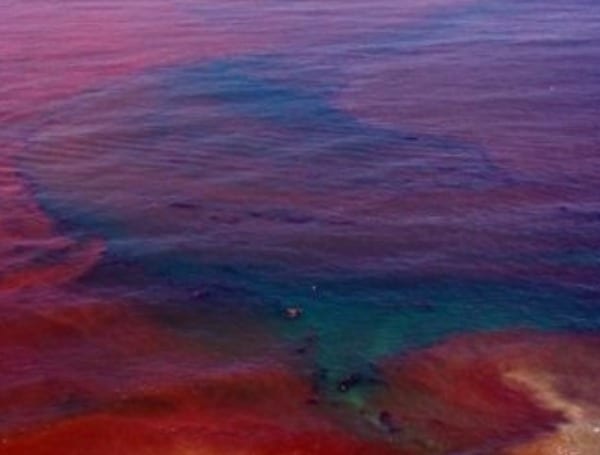Red Tide (File) Red tide continues to be a concern in Southwest Florida, with high concentrations detected offshore of Pinellas, Manatee, and Sara

Red tide continues to be a concern in Southwest Florida, with high concentrations detected offshore of Pinellas, Manatee, and Sarasota counties. The Florida Fish and Wildlife Conservation Commission (FWC) and its partners are closely monitoring the situation.
Over the past week, the red tide organism Karenia brevis was found in 49 water samples collected from Southwest Florida. Of those, 9 samples had bloom concentrations (over 100,000 cells per liter): 5 were offshore of Pinellas County, 2 offshore of Manatee County, and 2 offshore of Sarasota County.
READ: Florida Gulf Coast Weekend Fishing Report: October 26-28
Surface patches of red tide, visible as areas of discolored water, have shifted south over the past week. This movement aligns with typical ocean currents in the region. Offshore sampling confirmed that these patches contain high concentrations of K. brevis.
Red tide levels vary across Southwest Florida. Pinellas County has background to high concentrations both inshore and offshore. Hillsborough County has background to low concentrations, while Manatee and Sarasota counties have background to medium concentrations. Lee County currently has very low concentrations of red tide.
Fortunately, no respiratory irritation was reported over the past week. However, fish kills suspected to be related to red tide were reported offshore of Pinellas County.
READ: Florida Deer Hunting Season Kicks Off In Zone D With New CWD Regulations
FWC, along with partners at the University of South Florida (USF) and the National Oceanic and Atmospheric Administration’s National Centers for Coastal Ocean Science (NOAA NCCOS), are actively tracking the movement of red tide patches. They are conducting sampling offshore of Pinellas to Lee counties to gather the latest data.
Forecasts by USF and FWC predict that surface waters will move southwest, while subsurface waters will move southeast in most areas over the next few days. For the most up-to-date forecasts, refer to the National Oceanic and Atmospheric Administration’s Gulf of Mexico Harmful Algal Blooms Forecast.
Please make a small donation to the Tampa Free Press to help sustain independent journalism. Your contribution enables us to continue delivering high-quality, local, and national news coverage.
Android Users: Download our free app to stay up-to-date on the latest news.
Connect with us: Follow the Tampa Free Press on Facebook and Twitter for breaking news and updates.
Sign up: Subscribe to our free newsletter for a curated selection of top stories delivered straight to your inbox.

